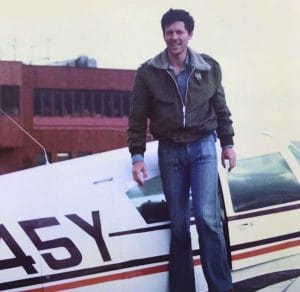Born and raised in Israel, Cohen was in high school when he read an article in the newspaper about “electronic brains” — computers. “The idea of having a machine that acts like a brain was very fascinating,” he said years later, “and that got me interested in the area.” First, though, he had to get through a stint in the Israeli Army as a paratrooper, and then he could go to Technion — Israel Institute of Technology, where he got a degree in mathematics. He moved to MIT for his graduate work. His project: to develop the first real-time visual flight simulator on a general purpose computer.
During that time, he heard that Ivan Sutherland, the “father of computer graphics,” was teaching a graduate-level seminar on computer graphics at Harvard; it was 1967, and Cohen transferred to Harvard to work with Sutherland, earning his Ph.D. under him. His flight simulator was a success — once he and his professor developed computer graphics line clipping algorithms, now known as the Cohen-Sutherland graphic algorithms. “The biggest problem in drawing this kind of thing,” he told an interviewer years later, “is that there are lines that start in front of you and end behind you. The key to do it is to understand how to do 3-D clipping,” so that the computer doesn’t spend processing power on displaying what would be out of view. Airlines were eager to use the innovations to train pilots. Thanks in part to his flight simulator, Cohen himself became a pilot.

Click to see larger.

Once he finished his Ph.D. in computer science, Cohen taught computer science at Harvard, then Caltech, and then joined the Information Sciences Institute at the University of Southern California, where he stayed for 20 years. Various government agencies came to him frequently for help in working out early computer issues. Another Cohen innovation came from that work: the first real-time radar simulator. Another project came from the Advanced Research Projects Agency, for their ARPAnet, which later evolved into the Internet. “They wanted to know if we could apply some of our real-time graphics approach to voice over the early networks,” Cohen told an interviewer. He succeeded: he led the group that made the first online voice teleconference, which was carried over the ARPAnet in 1978. That, in turn, was adapted to online video — and none of it was patented.
“With Skype and everything else out there, I guess you could say it was a $10 billion mistake,” Cohen said, “but that is the way I thought about it: we were academics.” His contributions are probably worth a lot more than that. “Danny was largely responsible for our ability to receive streaming media,” says Leonard Kleinrock, a networking pioneer at the University of California–Los Angeles. Cohen, he says, “had the uncanny ability to employ his deep mathematical intellect and insight to real world challenges, with enormous impact.” Dr. Cohen was inducted into the Internet Hall of Fame in 2012, and died at his home in Palo Alto, Calif., on August 12, from Parkinson’s disease. He was 81.
